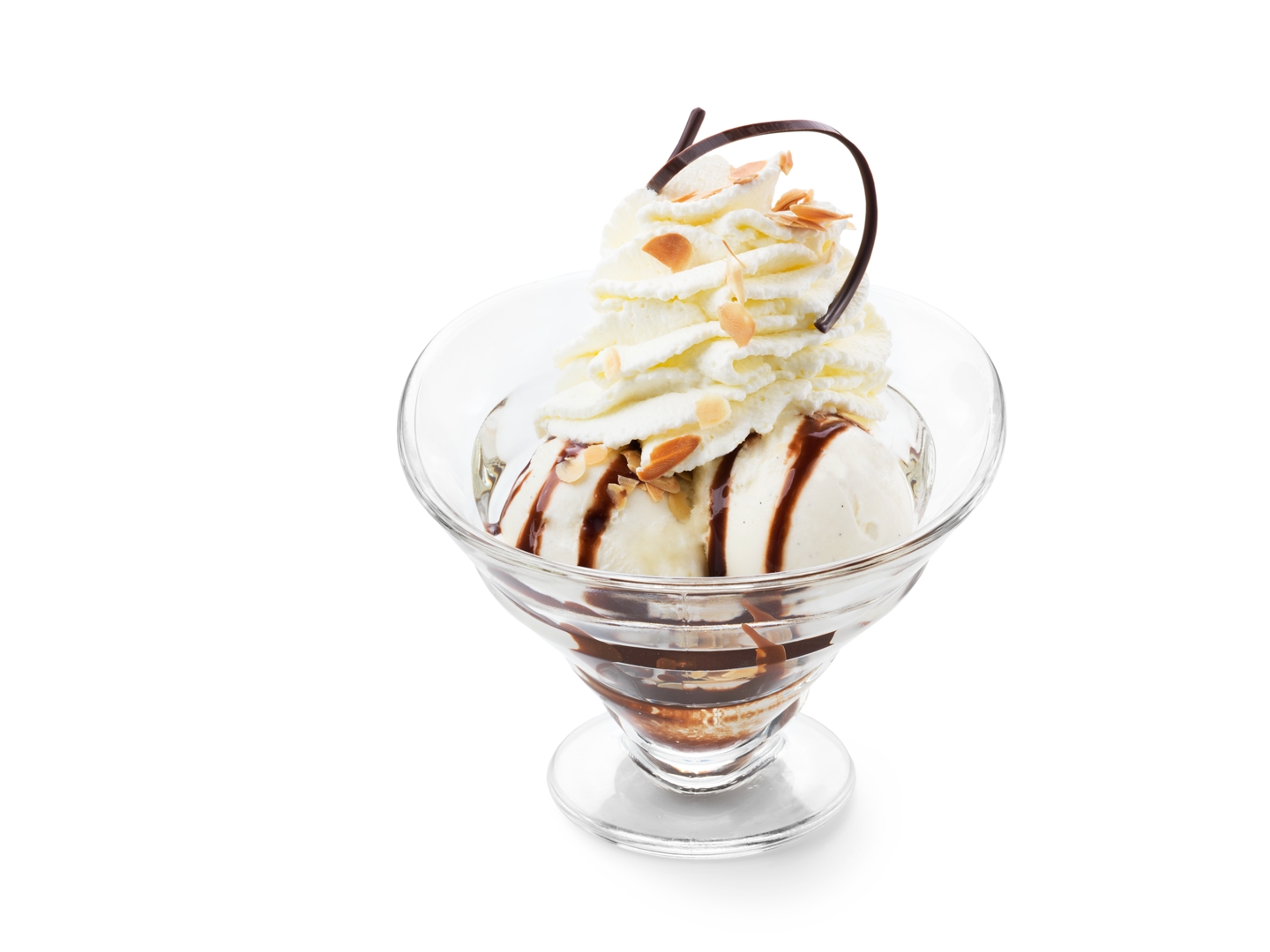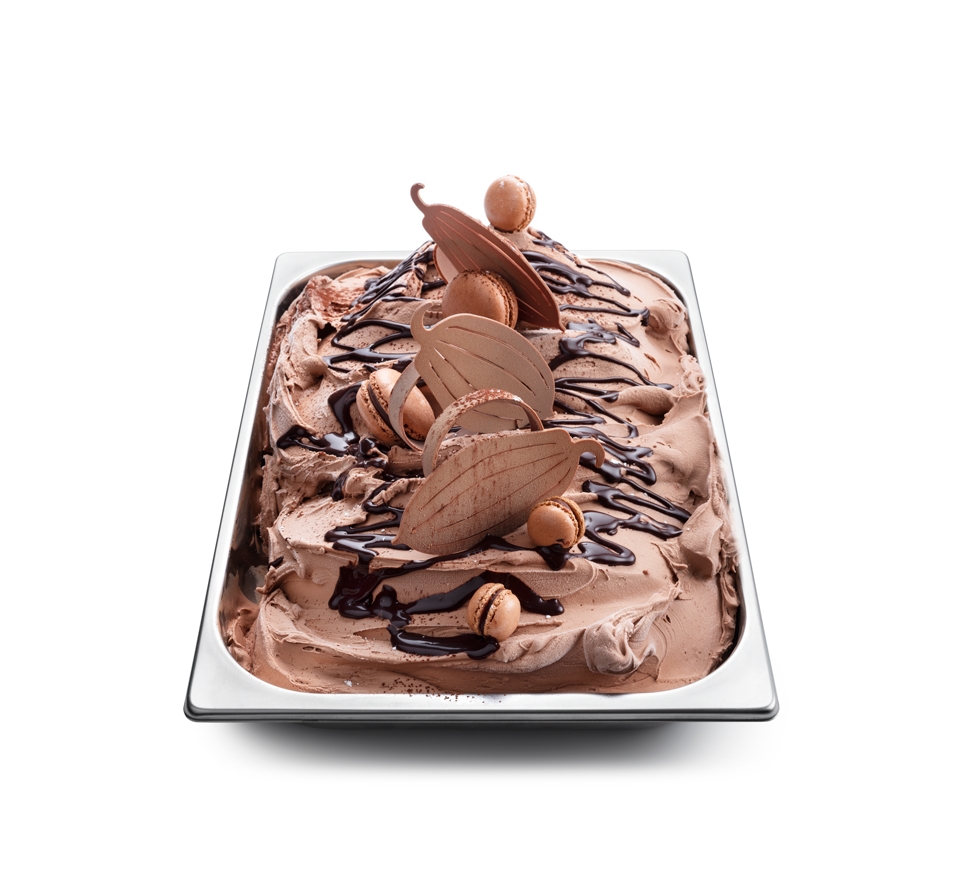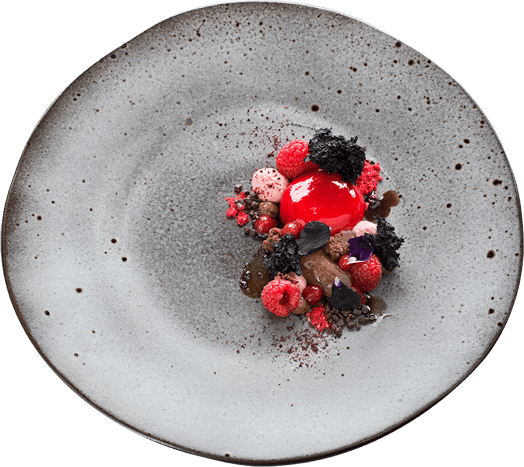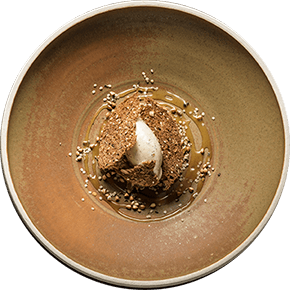Serving ice cream in your restaurant
The Italians have spread this ice-cold delicacy across the world in times when there wasn’t any refrigeration. Worldwide, ice cream is the most chosen dessert in restaurants. There are many convenience solutions as in ready to scoop ice creams available in the market. Thanks to smaller ice cream machines and solutions as in Pacojet type of machines, making ice cream from scratch is accessible again for every type of kitchen and will boost your creativity and on the other hand is also really profitable for your business.

Ice cream science: how to make ice cream
Ice cream in general exists out of four elements: ice crystals, fat globules, sugar and air bubbles. The science behind this is much more complex. To understand the science behind ice cream it’s best to explain how ice cream is made. A classic industrial produced ice cream consists of 55-65% water, where legally regulated a 5% of milk fat is added to the water content. On top of this milk solids, not fat, a percentage of sugar, emulsifiers and stabilizers such as gelatin or egg yolks are added to the mixture. This mix will be often homogenized, pasteurized and aged in the refrigerator. Eventually the mix will be churned in an ice cream machine. The soft velvety texture of the ice cream is only created when the cooling and freezing of the water content takes place during continuously mixing. This way the ice crystals are prevented from growing too large. On the other hand air is whipped in the ice cream. The size of the ice crystals is crucial for the texture of the ice cream: large ice crystals give a grainy texture to the ice cream. The incorporation of air in ice cream increases the volume and makes the product soft and creamy since air will not freeze.
The role of the ingredients
Like written before, ice cream exists of a few key ingredients. By tweaking the amounts of the ingredients, different textures and tastes of ice cream can be created. Key is to understand how these different ingredients interact.

Milk Fat
The milk fat plays an important role on the stability and creaminess of the ice cream. Ice cream with more fat is melting slowly compared to ice cream with less fat. Ice cream with a higher fat percentage has a long lingering flavour with less flavour release. Taste perception therefore is less intense than ice cream with a lower fat percentage.
Milks Solids, Not Fat
The dry, not fatty milk solids in milk, cream, milk powder or condensed milk also contribute to the structure of the ice cream. A big part of these components consists of milk proteins. These help to incorporate air into mixture and protect the fat globules for a stable structure of the ice cream. To dosage these MSNF accordingly you will find the use of milk powder in many ice cream recipes and can adjust your ice cream formula exactly by the gram since milk powder consists a lot of milk protein.
Sugars
Sugars have an important influence on taste and lowering the freezing point. In the recipes we can make use of different types of sugars. All different types have a different freezing point and different sweetening strength. Here lays the challenge for the chef to create a recipe with the right freezing point and balance this with the right sweetness of the ice cream. For savoury ice cream you could make use of maltodextrin. This waste product of sugar production has almost no intensity of sweetness. It is used to substitute the sugar and dry matter in the ice cream composition.
Emulsifiers and stabilizers
Emulsifiers and stabilizers have an important role in a recipe as well. Traditionally egg yolks are used for flavour. Egg yolks also help to obtain a strong emulsion to ensure a nice distribution of the fat globules in the ice cream and to give a good stability to the ice cream. In commercial ice mixes egg yolks are replaced by mono- of diglicerides. Stabilizers like the word says are used to make sure the ice cream doesn’t melt that quickly. Traditionally gelatin was used. Nowadays there are special type of mixed powders in the market to act as a stabilizer and emulsifier at once and can replace your egg yolks and/or gelatin. These powders also ensure the formation of ice crystals that influence the texture of the ice cream.

The formulas for perfect ice cream recipes
Let’s focus on the calculation of the ice cream formulas. The preparation of ice cream is not an easy 1-2-3. An excellent ice cream recipe contains the right balance of the ingredients. Different ice creams with different ingredients – with or without egg yolks, alcohol, chocolate nut etc. ask for different proportions of the key ingredients. There is no such thing as one recipe for all types of ice. Therefore we need to make different recipes for different bases. The advice is to create more basic mixes. For example a base for nutty flavours, chocolate and a base for fruity flavours. What we want to achieve is every time the same sweetness intensity and scoop ability of the ice cream. To determine this, we need to calculate the freezing point and serving temperature of the ice cream
Parameters
For a good quality ice cream, you need to take into account the following parameters:
- The total amount of dry matter
- The percentage of milk solids, not fat
- The milk fat percentage
- The freezing point
- The sweetness intensity
Ice cream recipe calculation
Like said an ice cream composition consists out of water and dry matter, mixed into a homogeneous emulsion. Ice cream consists more or less out of 65% water and 35% of dry matter. A sorbet consists more or less out of 70% water and 30% of dry matter. A perfect ice cream recipe is achieved to create the right balance of ingredients. It’s helpful to use an existing ice cream recipe formula spreadsheet to calculate your recipes. The weight of ingredients can be adjusted easily and the impact of this change will be immediately visible. The table below is an example of a recipe calculation sheet to calculate the proportion of ingredients.
Flavouring agents, herbs or spices which you let infuse into the mix have almost no influence to the right proportion of your ice cream mix. When we make chocolate ice cream out of cacao powder, we add dry matter to the mix which changes the balance of the mix. If you make an ice cream out of chocolate we not only add parts of cacao to the mix, but as well fat. The criteria how you can influence your ice cream recipe is: milk – Fat (MF), Milk Solids, No Fat (MSNF), relative sweetening power (RSP) and total dry matter (TDM). De TDM is the total of dry matter in the basic mix*. De TDM-percentage needs to be in between 28% and 35%.
A calculation example: We determine a TDM of 34% of 1000 gram = 340 gram of Dry Matter.
*We can increase the amount of the total dry matter percentage by adding more sugar, fat or milk solids.

Freezing point lowering factor
Sugar has an important influence in creating ice cream and lowers the freezing point. Many times there are different types of sugar used in a recipe, because every type of sugar has a different freezing point and different sweetening power. To make sure ice cream is still scoop able at a temperature of -12°C, is due the fact of the freezing point depression. The sweetening power is a measure for the sweet taste of a product, compared to the sweet flavour of plain table sugar or sacharose based on the same weight of the ingredient. The sweetening power of sacharose is 100. The sweetening power of Maltodextrin is for example 5. That means that sacharose is twenty times as sweet as maltodextrin. See the table below for the sweetening power of the different ingredients.
The freezing point depression is not easy to calculate, even for scientists. But it’s good to know that there are particular ingredients that influence the freezing point. We know an ice cream mixture contains water and dry matter. The sugars are dissolved in the water and influences the freezing point. The more dissolved ingredients into the water, the lower the freezing point will be. The more air you incorporate into the ice cream, the easier the scoop ability will be. The fat in the mix will not influence the freezing point. Fat can harden when it is frozen, but just has an influence on the structure of the ice cream. Ice cream with more fat melts less quickly that ice cream with less fat. Sugar and alcohol are the only criteria that lower the freezing point.
Calculation of the percentage of Milk Solids, Non Fat
The MSNF contribute to the texture of the ice cream. To dosage the right amount of these MSNF parts, we use in a recipe in many cases milk powder. Milk powder doesn’t contain any fat and that way makes it more easier to calculate our ice cream formula exactly.





